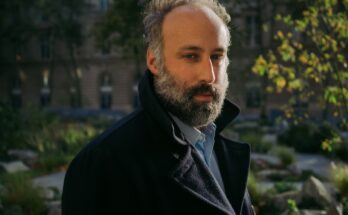One way or another, the shadow of the past is always lurking in Romania. On this occasion it was a fascist-tinged hymn performed by a children’s choir in the recently inaugurated People’s Salvation Cathedral in Bucharest, the largest Orthodox temple in the world, that unleashed a storm of criticism by recalling the regime of Ion Antonescu, a faithful ally of Adolf Hitler’s Nazi Germany until 1944 and who, despite having perpetrated the Holocaust against Jews and Gypsies, is remembered by nationalism for the alleged period of progress under his command.
Last Thursday, on the occasion of the Day of the Military Clergy, the Romanian Orthodox Church gathered Romanian army officers, Defense Minister Liviu-Ionut Mosteanu and Chief of Staff Gheorghita Vlad in the National Cathedral. The news came when the press agency of the Romanian Orthodox Church released a video on social networks in which a children’s choir can be seen singing the melody during the ceremony. Avem or țara (We have a country).
Several media immediately branded the composition as “fascist”, attributing it to Radu Gyr (1905-1975), a poet who became commander of the fascist government during the Second World War and who was sentenced to 12 and a half years in prison for war crimes. And the criticism intensified. Vasile Banescu, former spokesperson of the religious institution and current member of the council that regulates audiovisual content, declared: “The festive cultivation, in the ecclesiastical space, of the memory and texts of some intellectuals who once succumbed to the temptation of ideological demonism, both fascist and communist, causes enormous damage to the Church.”
The Romanian Orthodox Church was forced to issue a statement. In it he assures that the song “has been attributed in recent years, completely incorrectly, to Radu Gyr” and underlines that it does not promote “any totalitarian political doctrine”. According to the institution, the composition sung on Thursday is not the original poem but a slightly modified version of it, prepared years ago by some nuns of the Diaconești monastery.
Amfilohie Brînză, a recognized fascist, was a priest in that monastery.
“We believe that the erroneous interpretation of the true intention of using a text with a patriotic and religious message is due to a campaign of forced association of the image of the Romanian Orthodox Church with political doctrines foreign to the teaching of faith that it preaches”, defended the Romanian Patriarchate, which has allocated 270 million euros to build its brand new cathedral in 15 years. The money came almost entirely from the Romanian state – which has sparked controversy – and, to a lesser extent, from private donations.
Alexandru Florian, director of the Elie Wiesel National Institute for the Study of the Holocaust in Romania, urged the competent authorities to report what happened. “A hymn to the military clergy by a prominent fascist militant in the new National Cathedral, where we also find saints whose lives were linked to the legionary movement, is a shocking act of extremist propaganda,” added the head of the institute that preserves the memory of the Holocaust.
Located on a hill adjacent to the Parliament – popularly known as the House of the People, the largest civil-administrative building in the world, built by dictator Nicolae Ceausescu – the cathedral can accommodate up to 5,000 people inside. Inside the ecclesiastical enclosure, 127 meters high and with a surface area of 38,000 square meters, the soldiers observed with curiosity the 27 gigantic bronze doors – each weighing approximately 800 kilos – and the iconostasis, also the largest in the world.
For years, Romanian authorities have denied Romania’s involvement in the Shoah (Holocaust). To the point that Antonescu, sentenced to death for war crimes and executed in 1946, is still considered a hero by many. However, according to historians, that dictatorship killed between 280,000 and 380,000 Jews and 11,000 gypsies. The peak of the genocide occurred between 1941 and 1942, when Hitler ceded the territory of Transnistria to Bucharest, a region now proclaimed de facto independent within the borders of Moldova.
The Holocaust has been explained in Romanian secondary education for just over a year, when it became the only country in the European Union where it is explicitly studied in a specific subject outside of History. However, according to a survey by the Elie Wiesel Center, only one in ten Romanians knows the role played by the country during the Shoah.
The far-right AUR formation, which entered Parliament in 2020 and which, according to polls, is now the most voted party, with 35% of the vote, is opposed to explaining Romania’s role in the Holocaust. Its leader, George Simion, called it “a minor issue,” a statement that drew sharp criticism.
Previous
This is not the first time that markedly fascist lyrics have been heard in Romania. In recent years, students at the military academy have sung them on several occasions. The government even released a video that was deleted shortly after.
The Church wields considerable influence in Romania, as it remains one of the most trusted institutions in this conservative country of 19 million people. 85% of them identify as Orthodox.
“The hierarchs and clerics of the Romanian Orthodox Church, in most cases, naturally accept the evidence that we are a nation of Latin origin, that Euro-Atlantic integration has enormously developed the country and that democracy (with its intrinsic pluralism) is preferable to dictatorship”, explains Teodor Baconschi, theologian and former Romanian Foreign Minister. “Now, legitimate, moderate, civic patriotism is one thing, and orthodoxy based on idolatry of the nation, xenophobia, anti-EU and anti-NATO speeches, apologies for Russian crimes and combined nostalgia for fascism and anti-NATO are another thing. cessausism“continues the anthropologist, who is also an anthropologist.
“His preaching, fueled by the mythologization of the ancient or recent past (full of totalitarian tragedies) has provoked the rise of an extreme right to the point of endangering the Euro-Atlantic and democratic destiny of the country, as seen in the horrible 2024,” underlines Baconschi referring to the presidential elections “later annulled” won by Calin Georgescu, an unknown ultra-religious candidate called the Messiah of TikTokdue to suspicion of Russian interference.



